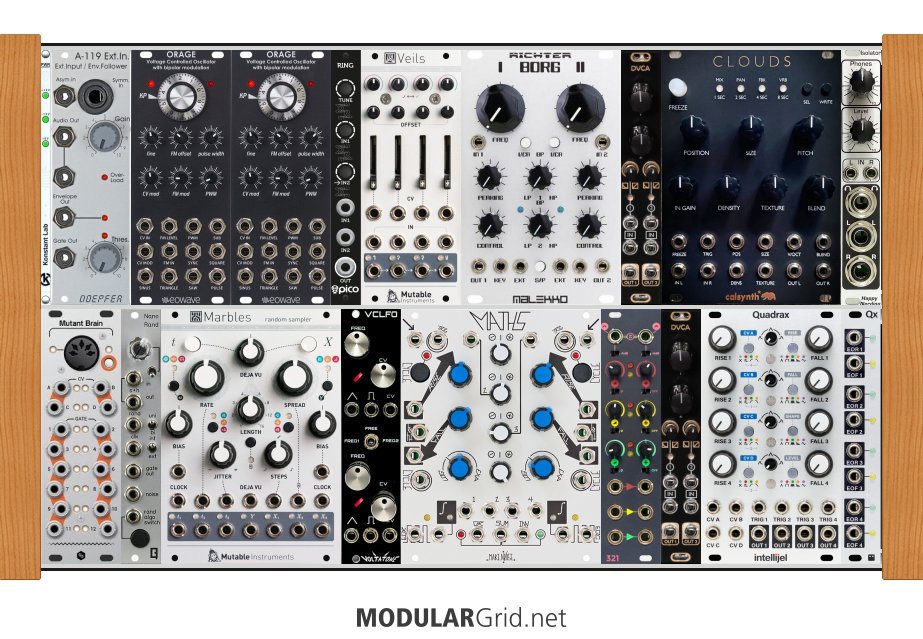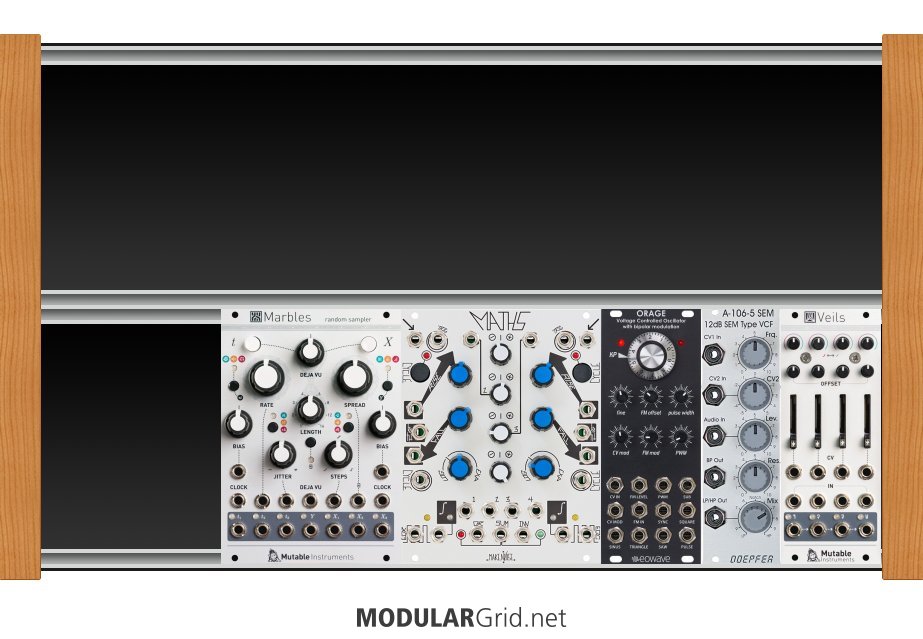Went ahead and did a fill-out of this, since there were some modules not in the rack itself that gave me some good ideas on how to proceed:

So, this has the audio on the top row, control/modulation on the bottom. This lets you run your audio path across the top, and then you bring the lower row signals up to the top when/where needed.
TOP: Starts with a Konstant Labs PWRchekr to keep an eye on your DC rail health. Then for the external input, I went with the ol' reliable Doepfer A-119. Sure, it's been around about 20+ years...but that's because Dieter designed it right and it became sort of the "gold standard" for good external inputs. It not only allows you to have that crucial step-up in voltage, you also get a comparator that fires a gate when a given level is exceeded, and a proper envelope follower to derive dynamic signals from the inputted audio. I doubled the Orage VCOs (one VCO good, two VCOs MUCH better!), and added Erica's PicoRing, which is a single ringmod with an internal carrier oscillator. This then goes to the Veils, which has four VCAs and allows you to split the mixbus; given the multiple waveforms of the Orage VCOs, it seemed like the combo of those + the Veils was a good fit to allow shifting between waveforms for more timbral variation. Chucked the 12 dB VCF in favor of something WAY more versatile and which also lets you go from mono to stereo...which you need for the Clouds. The Wiard reissue (from Malekko) of the Dual Borg not only gives you a pair of multimode VCFs, they can also work as gates...and not merely lowpass ones, either! Coming out of the Dual Borg, you hit an After Later dual VCA based on Veils topology. Then the Clouds, now fed with a stereo signal, feeds to the new version of Happy Nerding's output module, which also has a headphone preamp and also has your main output level control.
BOTTOM: For a decent and user-definable MIDI interface, I went with Hex's Mutant Brain. Then the new version of the Qu-bit Nanorand provides ample random signals for the Marbles to chew on. After that is a pair of CVable LFOs from Volt-a-tone and then, of course, Maths. I should note that Maths is one module that can be confusing at first, but once you decipher the way YOU want to use it, it becomes apparent that this module is majorly OP! After that, a Frap 321 and another After Later VCA pair gives you a pretty good modulation processing pair, then we get to the Quadrax...which now has its expander.
This isn't too shabby...fact is, it's a great basic small modular with loads of sound design possibilities, and every basic module you'd need (and then some!). One note: there aren't any mults here...which is what you want, as builds like this demand function in every panel HP. Use inline mults or stackcables here when needed for that. Also, keep the max depth of 45mm in mind here...some cabs don't tend to run that deep, although these days manufacturers are getting more savvy about their module depths.



